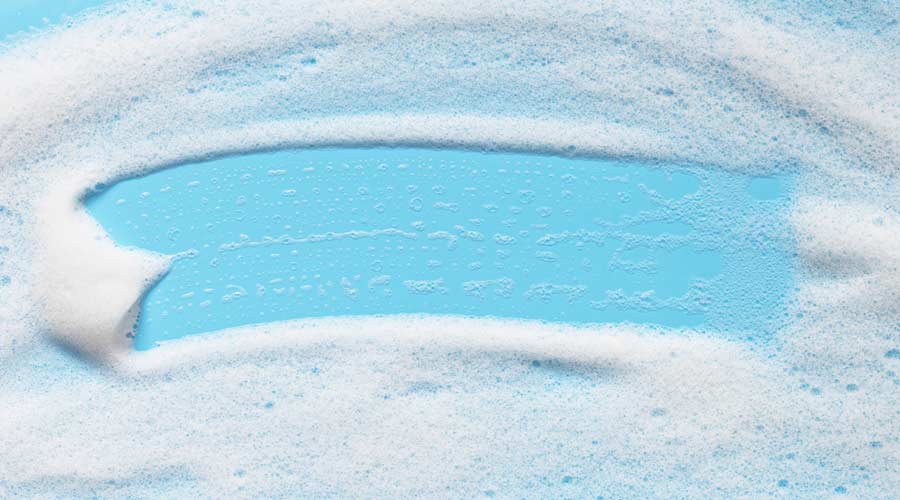 |
A typical jan/san distributor's showroom in the '40s. A well-organized space suggested similar notions about the company. |
For example, in September 1943, General Conservation Order L-283 limited broom manufacturers to only 20 broom designs. It also outlined restrictions on handle sizes, finish coats and the amount of wiring used in the neck wring. One month later, the War Food Administration adjusted soap formulations to use rosin instead of natural fats and oils to stretch supply. In addition, soap buyers were regulated to purchasing only enough products for a 45-day inventory.
With limited materials available, Marshall Magee, then president of the National Sanitary Supply Association (NSSA and now known as ISSA) urged manufacturers to first use resources to make gun cleaners, motor cleaners and kitchen cleaners (for army camps) in a 1943 article. The war effort took priority and only after those needs had been met could civilians be considered.
As products did become available for commercial use, there was little emphasis on cleaning for appearances. Instead, the focus was on the health and safety of building occupants.
“We must find a way to protect the health of our 125 million people and the rest of the world as well because disease can kill more people than all of Hitler’s and Tojo’s bullets,” said Magee.
Materials to make cleaning products weren’t the only things in short supply during this time. Distributors’ employees and job candidates were continually being drafted into the military, causing a labor shortage. In a 1943 editorial, Apple recommended recruiting women, as well as physically handicapped and elderly men to fill vacancies.
Through all the hardships, the NSSA was there to offer advice and support for distributors. Even though the government restricted conventions of 50 or more people from meeting, NSSA was granted an exception because of the importance of sanitation. However, in 1945 as the war ended and the country shifted to a time of rebuilding, even the NSSA was prevented from holding their annual convention. It resumed the following year.
After the war, there was a demand for clean facilities. Men from small towns and farms had been exposed to high standards of cleanliness while in the military. When they returned home and went back to work, they expected the same level of sanitation.
“What was good enough for grandpa isn’t going to be good enough for the returned service man or woman,” said John E. Nelson, then sales director of The Selig Co., in a 1946 article. “The dawn of a new era is upon us and we can all prosper in the sunshine of an enlightened public’s appreciation and demand for the highest standards of sanitary maintenance.”
With the nation more aware of the need for cleaning, the janitorial supply industry began to take off. Men returned from war and started their own jan/san distributorships in this burgeoning industry. Membership in NSSA and at its conventions continued to grow and the association began holding regional meetings across the country.
But with high demands for products and the world still rebuilding, raw materials were slow to return to the supply chain, especially animal fats for soaps and pine oil for disinfectants. When materials did return, they often were at inflated prices.
Seven Decades of Clean
1950s: The Janitorial Supply Industry Takes Off

 The Down and Dirty on Cleaning in Virus Season
The Down and Dirty on Cleaning in Virus Season How Surfactant Use is Expanding in Commercial Cleaning
How Surfactant Use is Expanding in Commercial Cleaning